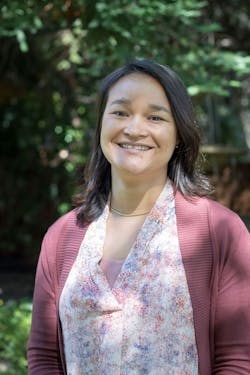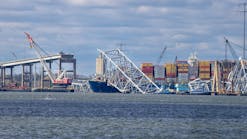Storm Water Management in Public Education
About the author:
Jennifer Swart is public affairs representative for the Water Replenishment District. Swart can be reached at [email protected].
The Water Replenishment District (WRD) has a longstanding commitment to water education. This is exemplified at the Albert Robles Center for Water Recycling and Environmental Learning (ARC). By demonstrating the importance of water, WRD seeks to increase environmental literacy, inspire behavioral change, and empower visitors to implement green infrastructure solutions at their homes and businesses. WRD believes it is important to not only provide clean, safe and reliable water, but also to create an informed and active citizenry.
WRD is the largest groundwater agency in California, serving more than four million people in southern Los Angeles County. Through WRD’s Water Independence Now (WIN) program, recycled water and storm water are now used for 100% of the district’s groundwater replenishment purposes. WRD has invested in its Water Education Program for more than a decade. Through K-12th grade lessons and field trips, community events, and the Eco Gardener landscaping program, WRD meets community members where they are and speaks to the water issues that affect them.
Completed in 2019, the cornerstone project of WIN is the 5-acre Albert Robles Center (ARC), located in Pico Rivera. The facility is a multipurpose, multi-benefit site, which includes a 14 million gallon per day advanced water treatment facility, Learning Center and Demonstration Garden. These features secure a reliable source for groundwater replenishment, while improving neighborhood engagement, health and aesthetics. An integrated storm water management system was installed to maximize infiltration while also preventing pollutant loading offsite. All aspects of the green infrastructure at ARC are incorporated into the educational programming onsite. Understanding that "seeing is believing," visitors witness firsthand that the built environment can mimic nature to reap the benefits of natural systems.
The integrated storm water management system along with a low-flow, drip line irrigation system that uses reclaimed water was pivotal in securing ARC’s LEED Platinum Certification. During the ARC LEED Tours, visitors are guided by docents to see the pervious concrete parking stalls, bioretention basins landscaped with native plants and the green roof with its lightweight perlite-laden soil. The underground treatment and infiltration system is described through interpretive signs onsite as the units are not visible from the surface.
A 250-foot-long working model of the San Gabriel River runs through the heart of the gardens, highlighting how river water can be diverted into spreading basins for infiltration and groundwater replenishment. The mechanized water feature has an inflatable rubber dam to demonstrate the operational flexibility of capturing storm water while maintaining flood control capabilities. Five interpretive signs follow the river feature and describe the changes the Los Angeles Basin has endured overtime through human manipulation of the waterways. Additions from the local organization Amigos de Los Rios show the Tongva and Gabrielinos native peoples’ use of the waterways prior to industrialization.
To demonstrate the natural plant communities of Southern California, the ARC Gardens are grouped into Native Woodlands, Native Meadow, Native Pollinator and San Gabriel River Riparian species. There is also a Mediterranean climate plant community to show non-native drought-tolerant species. Five interpretive ‘Plant Palette’ signs display scientific, and common names for select species and additions from Amigos de Los Rios describes the Tongva and Gabrielinos peoples’ medicinal, constructional or spiritual use for many of the species. WRD hosts Eco Gardener classes where attendees receive classroom instruction on sustainable landscaping practices before touring the gardens led by a horticulturist instructor.
While ARC’s primary purpose is to purify water for groundwater replenishment, its secondary purpose is to educate visitors about the green infrastructure that benefits the environment as well as the community. The importance of an informed and passionate citizenry will also benefit the water industry as it continues to invest in the public water supply. WRD hopes to inspire future environmental stewards and innovative green buildings by leading through example.






